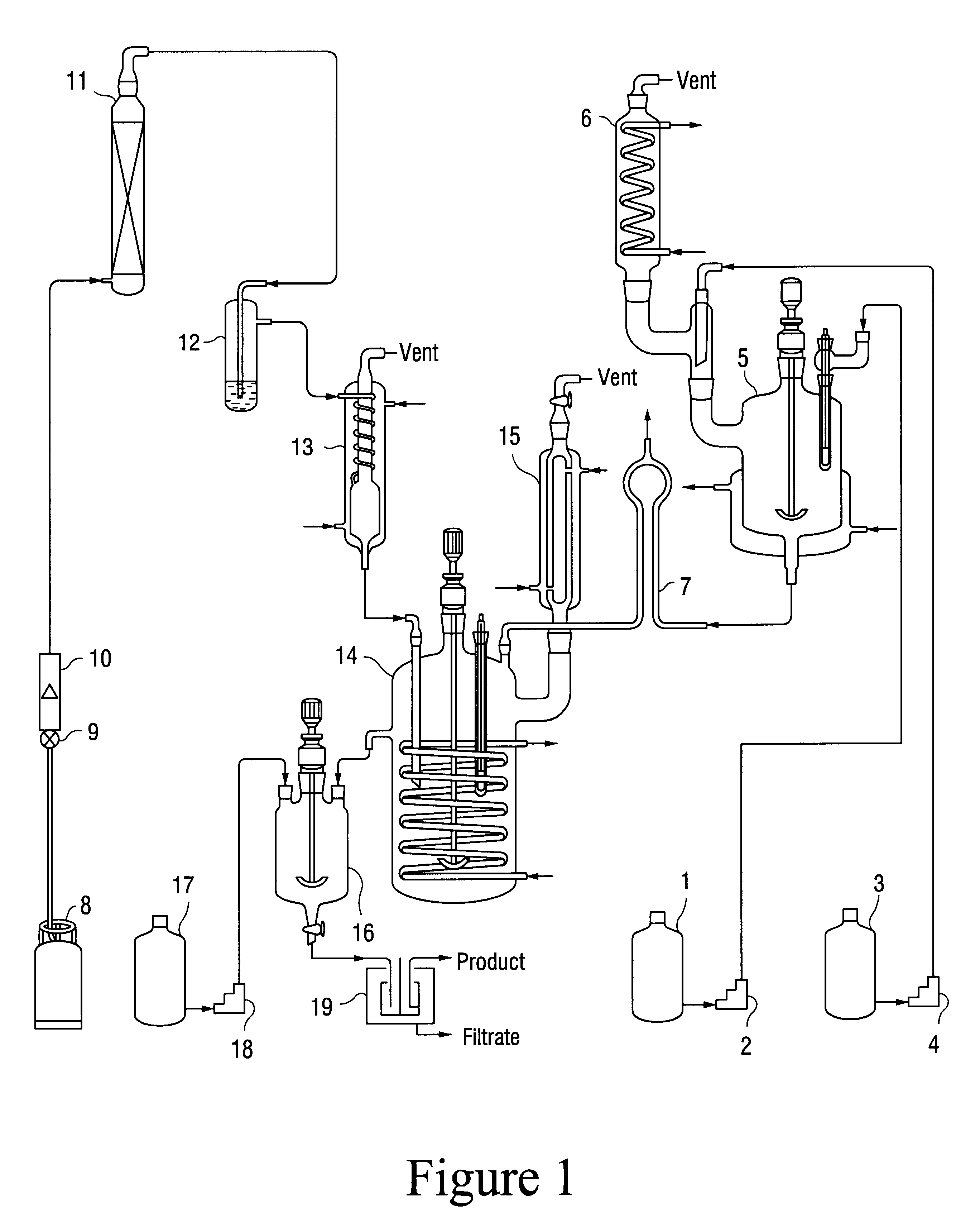Process for the preparation of 2-acrylamido-2-methyl-1-propanesulfonic acid
a technology of 2-acrylamide and 2-methyl-1, which is applied in the preparation of organic compounds, chemical instruments and processes, and organic chemistry, etc. it can solve the problems of increasing the cost of utilities, high capital investment on recovery, and higher operating costs of recovery at industrial scale of manufacture, so as to reduce the proportion of acrylonitrile
- Summary
- Abstract
- Description
- Claims
- Application Information
AI Technical Summary
Benefits of technology
Problems solved by technology
Method used
Image
Examples
example-1
A glass reactor with a capacity of 1200 ml, was charged with 477 g of acrylonitrile containing 1900 ppm of water. Acrylonitrile to sulfuric acid molar ratio was 5.7. The glass reactor was provided with stirrer, funnel, vent condenser and thermometer. 85 wt % phosphoric acid 5 g was dissolved separately in 155 g of 100 wt % sulfuric acid in a dropping funnel. This mixture was charged to the acrylonitrile earlier stocked in 1200 ml capacity glass reactor within 20 minutes through dropping funnel while maintaining temperature at 10.degree. C. 93.9 g of isobutylene gas was separately condensed in a dropping funnel type condenser. This liquefied isobutylene was added to the above reaction mixture as fast as possible maintaining the temperature at 30.degree. C. The temperature was then allowed to rise slowly to 45.degree. C. The 2-acrylamido-2-methyl-1-propane-sulfonic acid crystals were observed. The reaction mixture was slightly yellow in color. Very small amount of water was added to t...
example-2
The experimental procedure followed was similar to that of Example 1, except the quantity of acrylonitrile used was 716 g, containing 1940 ppm water. Acrylonitrile to sulfuric acid molar ratio was 7.65, the quantity of 100% sulfuric acid was 173 g. The quantity of isobutylene used was 99 g. The quantity of acrylonitrile used for wash was 250 g. The quantity of final product obtained was 315 g. representing 86% of the theoretical yield on isobutylene. The product was very white in color. Purity by acidity was 99.48%, while that by unsaturation was 98.9%. The color on APHA scale was 15.
example-3
The experimental procedure followed was very similar to that of Example 1, except the quantity of acrylonitrile used was 434 g, containing 1013 ppm water. Acrylonitrile to sulfuric acid molar ratio was 7.64, the quantity of 100% sulfuric acid was 105 g. The quantity of isobutylene used was 60 g. The quantity of acrylonitrile used for wash was 219 g. The quantity of final product obtained was 197 g, representing. 88.8% of theoretical yield on isobutylene. The purity by unsaturation was 99.7% and that by acidity was 101.26%. The color on APHA scale was 15.
PUM
| Property | Measurement | Unit |
|---|---|---|
| temperature | aaaaa | aaaaa |
| temperature | aaaaa | aaaaa |
| temperature | aaaaa | aaaaa |
Abstract
Description
Claims
Application Information
 Login to View More
Login to View More - R&D
- Intellectual Property
- Life Sciences
- Materials
- Tech Scout
- Unparalleled Data Quality
- Higher Quality Content
- 60% Fewer Hallucinations
Browse by: Latest US Patents, China's latest patents, Technical Efficacy Thesaurus, Application Domain, Technology Topic, Popular Technical Reports.
© 2025 PatSnap. All rights reserved.Legal|Privacy policy|Modern Slavery Act Transparency Statement|Sitemap|About US| Contact US: help@patsnap.com


